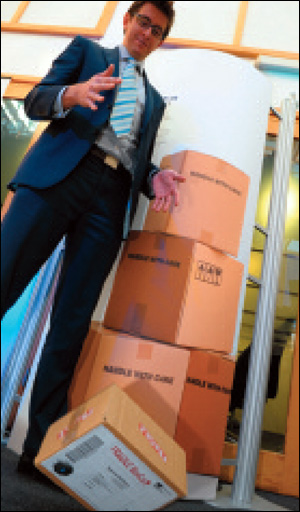In early August, when Finnish professional hockey teams faced off for the first preseason games, radio frequency identification was watching, silently tracking the players’ ice time. And when next season begins, RFID could be tracking each player’s physiology, to ensure anyone who might have gotten whiplash from a check or a concussion from a fall is treated immediately.
The RFID sports analytics system (which will be used in other sports besides hockey) is being developed through a partnership of Chicago-based Sports Technology Holdings (STH) and Kuru Digital Creations of Oulu, Finland. STH has been providing data and the software to analyze it to professional hockey teams in North America for several years. The firm collects a wealth of data about shots, checks, turnovers, odd-man rushes and more, input on touch screens by seven or eight off-ice officials during each game. Given the fast pace of ice hockey, getting all this information right is a challenge, so STH recently partnered with Kuru, which has been using RFID to collect one key stat: the amount of time each player is on the ice.
“With our system, coaches can get information in real time about each player’s playing time, shift count and average shift length,” says Markku Niemitalo, Kuru’s managing director. “Of course, it’s also possible to get the time they have been resting since last shift and other useful information that can improve decision making during the game.”
To collect information a passive ultrahigh-frequency RFID transponder is placed inside each player’s kneepad. Readers are positioned near the team’s bench and penalty box. The system, called KURU seQuence, automatically captures each player’s ice time. The data is 100 percent accurate, compared with 85 percent to 95 percent accurate when collected manually, the partners say.
“Ice time is the most important stat, and teams want the data to be 100 percent
accurate, so when we came across Kuru, it made sense to partner,” says William Boll, a managing partner at STH.
The two companies have combined their solutions into a new product called Quantum Pro Hockey, which STH markets in North America and Kuru provides to pro teams in Europe and Russia. The companies are also working together on an active RFID transponder with an accelerometer that will measure the impact of a check, sudden changes in direction and other data that could be used to determine if a player has been injured.
The partners are negotiating with an RFID company to design and build the prototype. They plan to test it and make it available for pro sports teams to use in 2016. Several teams have already agreed to participate in the trials. Niemitalo and Boll are convinced RFID is a winner.


